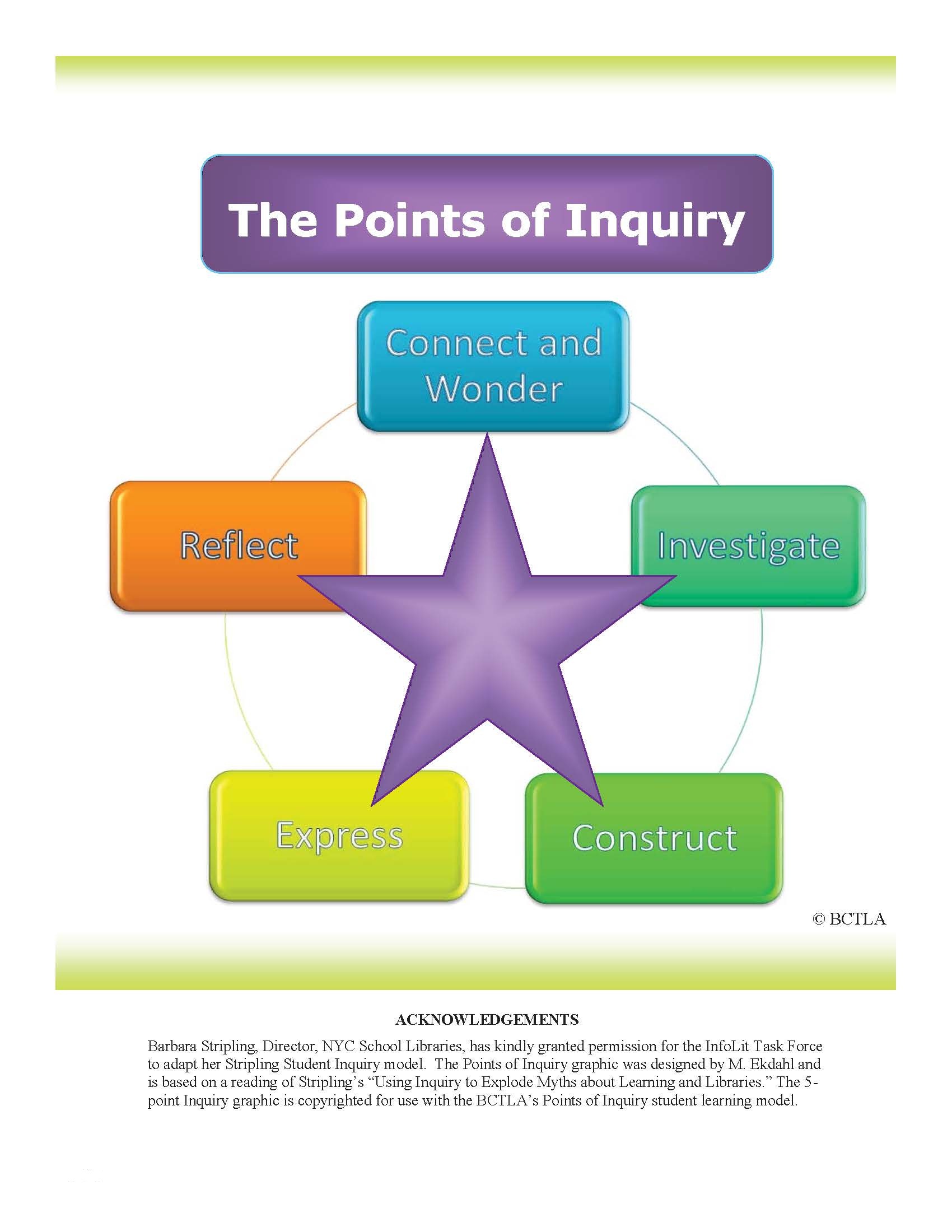On Monday at the Inquiry Hub, when students come to school this Points of Inquiry image is going to be in all classrooms and learning spaces.
 Here is where the image comes from: The Points of Inquiry – A Framework for Information Literacy and the 21st-Century Learner – BCTLA.
Here is where the image comes from: The Points of Inquiry – A Framework for Information Literacy and the 21st-Century Learner – BCTLA.
In year two at the iHub, we are getting students to dig into inquiry challenges right away. As teachers bounce from student to student we seem to be speaking in different terminology about the same things. This will be our attempt at some common language around what we do. How we Connect and Wonder, Investigate, Construct, Express, and Reflect can look very different, but at least we will know where students are (and where they need to focus) when we speak with them.
For example, students can get absorbed in Investigation or Construction, and forget that they also have to Express – to share what they have learned, to document their investigation. Or students can fail at accomplishing a goal and not take the time to Reflect and realize how much they gained and learned in the experience.
Using this common language will help guide us in our quest for truly inquiry-based learning experiences.

Find more Inquiry Resources in this post.

Hi Dave, I’m not sure if the original Stripling model was presented as the points on a star or if this is your interpretation, but I like the idea of ‘inquiry points’ much more than the more common models of ‘inquiry cycles’. Inquiry can start at any of the points and bounce between them, rather than moving in a defined order. Too often in (so called) inquiry learning contexts, teaching and learning follow a prescribed order, as per one or another inquiry model…
How about you post this at Inquire Within to promote some discussion among other inquiry educators?
Hi Edna,
Yes, Yes, and Yes!
Yes, a star is much better than a cycle, as reflection is inherent in all other areas (for one example).
Yes, a prescribed order just doesn’t work with the wonderfully messy nature of inquiry learning.
And yes, you have finally convinced me to share on Inquiry Within! I’m always telling others how important it is to share… thanks for the push:)
Thought I would share how we expanded on the Points of Inquiry in a working session with Inquiry Hub students: http://twitter.com/InquiryHub/status/382559050660978688/photo/1
~Dave
Well! I think inquiry can start at any of the points and bounce between them, rather than moving in a defined order. Too often in (so called) inquiry learning contexts, teaching and learning follow a prescribed order, as per one or another inquiry model.
http://www.thehoustonimmigrationlawyer.com/i-821d-deferred-action-for-childhood-arrivals
The use of a star is conducive to the iterative process of authentic inquiry. I like it!